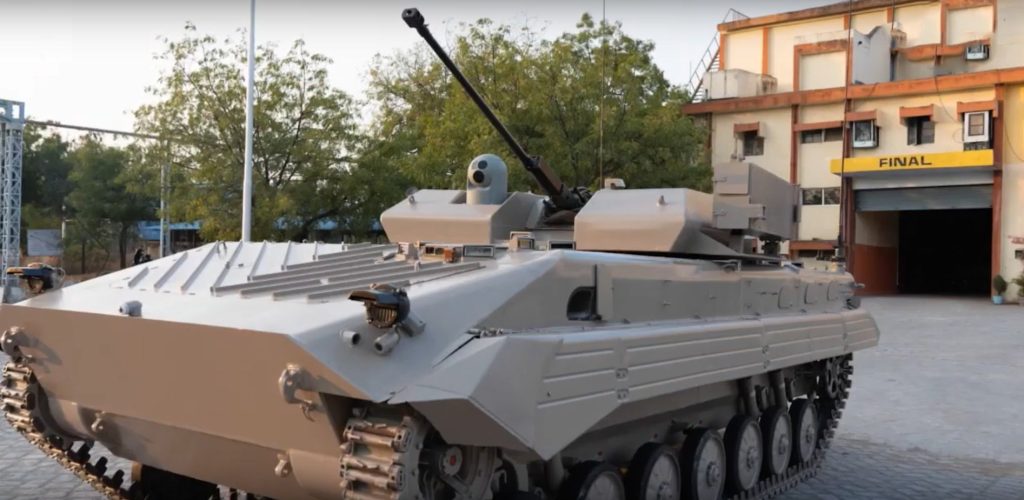SOURCE: AFI


The Ordinance Development Cell-Ordinance Factory Medak (ODC-OFMK) is at the forefront of developing Futuristic Infantry Combat Vehicles (FICVs) with significantly enhanced mine blast resistance. In collaboration with the Council for Scientific and Industrial Research-Advanced Materials Research Institute (CSIR-AMPRI), ODC-OFMK has incorporated innovative materials to bolster the vehicles’ survivability.
CSIR-AMPRI has developed an aluminum hybrid closed-cell foam reinforced with nanomaterials like CNT/Graphene. This advanced material exhibits superior strength (-15-25 MPa) and energy absorption (8-15Mj/m³). Based on extensive testing, it was hypothesized that these foams, when used in sandwich panel configurations, could effectively absorb substantial impact energy, making them ideal for blast mitigation applications.
ODC-OFMK successfully fabricated 30 kg foam castings of AA5083+10% SiC+0.2% CNT hybrid foam. Comprehensive characterization revealed impressive compressive properties, with average plateau strengths of -10 and 15 MPa for quasi-static and high strain rates (~800/s), respectively.
Microscopy and Raman spectroscopy were employed to analyze the foam morphology and CNT distribution within the foam matrix. The results confirmed the uniform dispersion of CNTs, contributing to the enhanced mechanical properties.
To simulate real-world blast scenarios, ODC-OFMK developed a scaled-down blast test rig. Using LS-Dyna software, the team replicated blast conditions equivalent to 100 g TNT. The simulations indicated that two configurations of sandwich foam panels were capable of absorbing significant blast energy, underscoring their potential as effective protective materials for FICVs.
The development of these advanced materials and their integration into FICV design mark a significant step towards improving the safety and survivability of Indian soldiers operating in challenging environments. ODC-OFMK’s collaboration with CSIR-AMPRI has yielded promising results, paving the way for future advancements in combat vehicle protection.